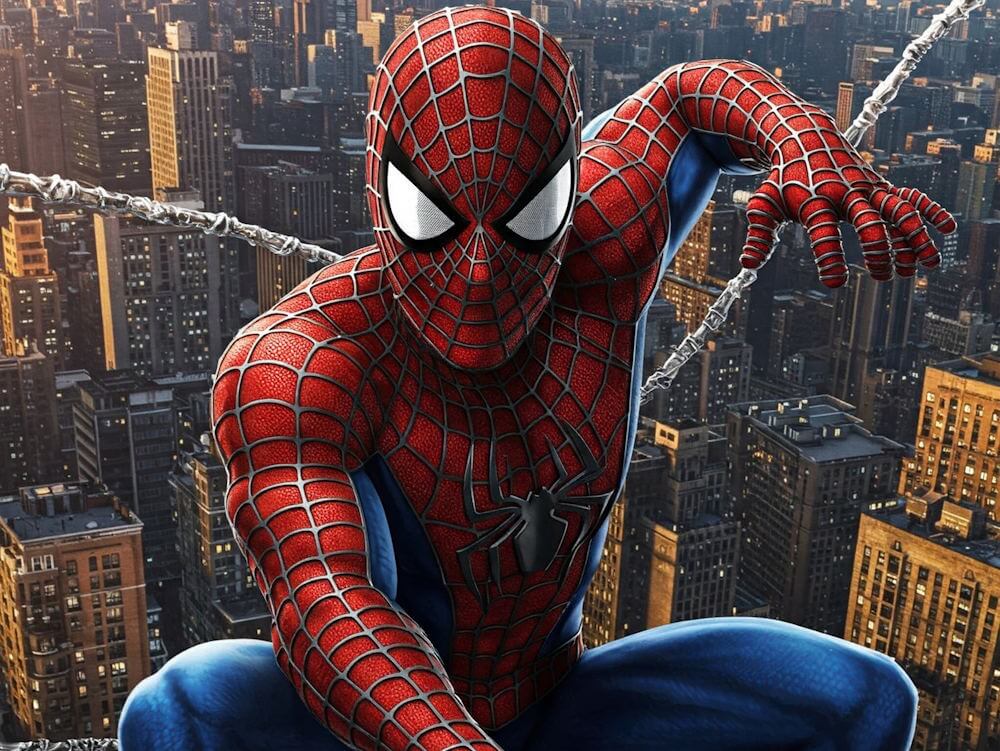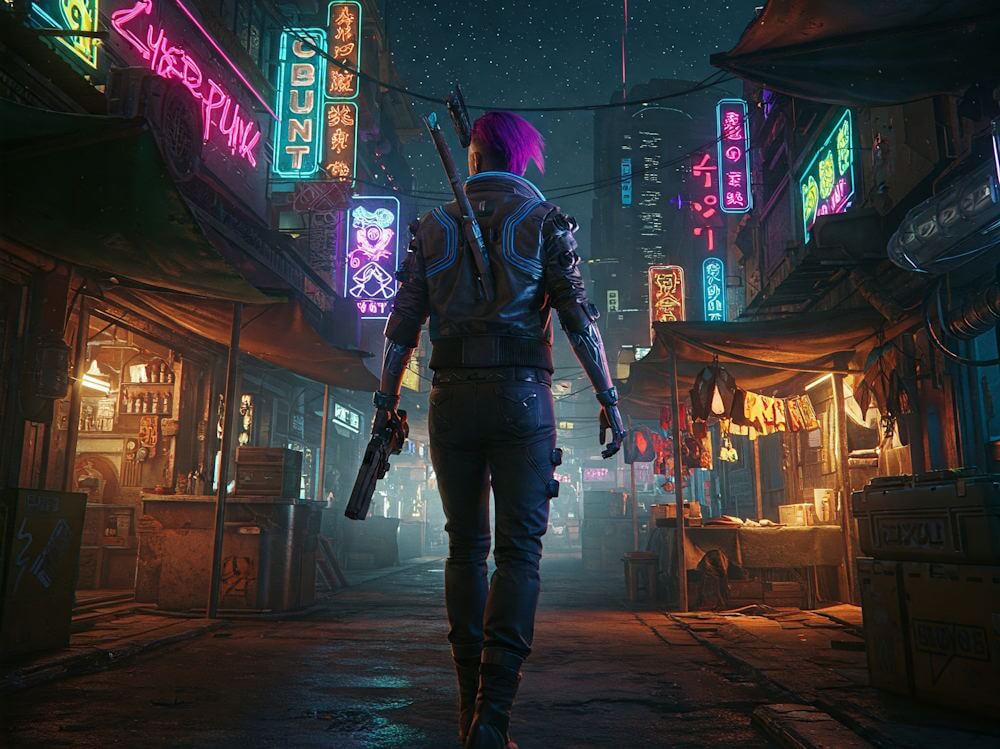Spider-Man 2 marks a significant milestone in the realm of video gaming, delivering an immersive experience that expands on the success of its celebrated predecessor. As the sequel in the Spider-Man franchise, the game not only enhances gameplay mechanics but also enriches narrative depth, promising players an exhilarating journey through the vibrant streets of New York City. With the gaming industry continually evolving, Spider-Man 2 arrives amidst heightened anticipation, demonstrating how sequels can effectively build upon established foundations while introducing fresh innovations.
The significance of Spider-Man 2 can be attributed to the legacy built by its predecessor, which has set a high bar for action-adventure games. Players have come to expect refined graphics, improved combat systems, and a compelling storyline. The development team has responded to this demand, promising enhancements that respond to fan feedback, creating a more engaging experience. Early previews of Spider-Man 2 showcase stunning visuals and gameplay features that captivate audiences, generating considerable buzz in the gaming community.
As discussions surrounding the game intensify, fans are eager to learn about new characters, plots, and mechanics that will contribute to the overarching narrative. Excitement has pervaded forums and social media platforms, where discussions range from the expected plot twists to speculation about gameplay elements yet to be revealed. Developer insights reveal a commitment to preserving the essence of the beloved franchise while infusing new life into the series. In this atmosphere of anticipation, the launch of Spider-Man 2 is more than just a game release; it represents a continuation of a narrative that has resonated with millions, paving the way for a new chapter in the Spider-Man saga.
Gameplay Mechanics and Improvements
In the highly anticipated release of Spider-Man 2, several gameplay mechanics have been significantly enhanced, resulting in a more immersive experience for players. The developers have placed a strong emphasis on refining the web-swinging mechanics, which serve as a cornerstone of the game. This iteration introduces a variety of new swinging techniques that allow players to traverse New York City with unprecedented fluidity. For instance, players can now execute advanced aerial maneuvers and perform dynamic flips while swinging, adding layers of skill to the already refined mechanics.
Combat has also received notable improvements in Spider-Man 2. The new combat system offers a more engaging and responsive experience, integrating new abilities that enhance Peter Parker’s agility and strength. Players can now seamlessly transition between various combat styles, allowing them to adapt their strategy on the fly. The introduction of contextual attacks and combo chains not only increases the variety of combat encounters but also encourages players to experiment with different moves in battles against enemies.
Additionally, the game introduces several new abilities, further enriching the gameplay experience. One significant addition is the “Venom” powers, linked to the character of Venom. These abilities provide players with unique offensive options and tactical advantages, enabling them to unleash devastating attacks or manipulate the battlefield environment. The incorporation of these powers adds a fresh layer of complexity to both combat and exploration, encouraging players to strategically choose their abilities based on the situation.
Overall, the enhancements made to the swinging and combat systems, along with the introduction of new abilities, culminate in a richer gameplay experience in Spider-Man 2. This combination of mechanics ensures that players are not only engaged in the fast-paced action but also feel a deeper connection to the vibrant world of Spider-Man, ultimately elevating the player experience to new heights.
The Expansive Open World of New York City
In the highly anticipated game, Spider-Man 2, players are invited to traverse a meticulously designed open world of New York City that immerses them in the iconic landscape of this bustling metropolis. Every street, park, and landmark has been crafted with unparalleled attention to detail, contributing to a sense of realism that enhances gameplay. The developers have ensured that famous sites, such as Times Square, Central Park, and the Statue of Liberty, are not only accurately represented but are also brought to life through dynamic weather patterns, day-night cycles, and an active population.
This expansive environment allows players to explore various neighborhoods, each with its own unique character and atmosphere. From the vibrant streets of Harlem to the serene paths of the Upper West Side, and from the shops of SoHo to the underbelly of the subway system, the open world of Spider-Man 2 encourages players to engage with their surroundings in meaningful ways. The intricate design holds numerous activities, challenges, and collectibles that motivate players to explore off the beaten path, contributing to a more rewarding gameplay loop.
Furthermore, the interactivity within this environment plays a crucial role in defining the gameplay experience. Players can engage in real-time events, such as stopping a robbery or helping citizens in distress, which not only reinforces the superhero’s role but also makes the city feel vibrant and alive. The seamless integration of these elements means that as players web-swing through the urban jungle, they also contribute to the overall narrative of the world surrounding them. As gamers take up the mantle of Spider-Man, they will find themselves in a contextual playground, embellished with both challenges and opportunities that test their skills and enhance their enjoyment of the game.
Character Development and Storyline
The narrative of Spider-Man 2 skillfully weaves together the distinct character arcs of Peter Parker and Miles Morales, illuminating their growth and the challenges they face in their dual roles as superheroes and young men navigating the complexities of their lives. Peter, depicted as an experienced yet burdened hero, grapples with the ramifications of his identity while striving to balance his responsibilities to his loved ones and the broader community. His journey reveals internal conflicts, particularly as he confronts the weight of past decisions and the importance of mentorship.
In contrast, Miles Morales emerges as a vibrant counterpart to Peter, embodying the youthful enthusiasm and self-doubt that come with stepping into the role of the Spider-Man. Throughout the game, we witness Miles’ evolving sense of responsibility, as he faces personal and external challenges that test his resolve. The game effectively captures Miles’ struggle to establish his own superhero identity, distinct from Peter yet intertwined through shared experiences and mutual respect. Their mentorship dynamic is central to the storyline, illustrating an evolution that deepens their bond while posing questions about legacy and accountability.
The overarching storyline is enriched by the detailed portrayal of key antagonists, which compels Peter and Miles to confront not only physical adversaries, but also their own fears and aspirations. Plot twists and emotional encounters heighten narrative tension, as secrets are unveiled, challenging both heroes to adapt and grow. By emphasizing their relationships with friends, family, and foes, Spider-Man 2 secures an engaging and resonant exploration of character development within a compelling storyline. The intricate interconnections reflect broader themes of heroism and personal growth, ensuring players remain invested in their journey through this vibrant world.
New Villains and Allies
In the highly anticipated release of Spider-Man 2, players can expect a fresh lineup of villains and allies that not only enrich the storyline but also significantly influence gameplay dynamics. The game introduces universally known foes like Venom and Kraven the Hunter, while also unveiling new adversaries that escalate the stakes for the iconic web-slinger.
Venom, a recurring character in the Spider-Man universe, retains his menacing presence but has evolved, incorporating new abilities that challenge players in innovative ways. He wields his iconic symbiotic powers to create devastating attacks that players must navigate carefully. The portrayal of Venom aims to deepen the drama, showcasing his connection to Peter Parker and the internal struggles that arise from their tumultuous relationship. This adversary demands strategic thinking from players who must adapt to his aggressive and unpredictable gameplay style.
Similarly, Kraven the Hunter offers a formidable challenge, employing his keen instincts and exceptional combat skills. His pursuit of Spider-Man on the streets of New York introduces intense chase sequences that enhance the open-world experience. With a background steeped in trophy hunting, players will find themselves pitted against Kraven in battles that test both reflexes and combat tactics.
On the side of allies, players will encounter Miles Morales, who becomes a pivotal character in providing support and enhancing cooperative gameplay options. His unique powers, complemented by a blend of stealth and agility, are essential in tackling the game’s more challenging missions. The dynamic between Peter and Miles introduces layers of collaboration, offering players varied combat styles, which invigorates the gaming experience.
Overall, the inclusion of these new villains and allies not only heightens the excitement of the game but also offers fans a richer narrative to explore, ensuring that Spider-Man 2 will be memorable in its execution and impact.
Visuals and Sound Design
Spider-Man 2 showcases a significant elevation in both visuals and sound design, creating a compelling and immersive experience for players. The artistic direction in this installment builds upon the remarkable achievements of its predecessor, presenting a world that feels alive and vibrant. Each setting, from the bustling streets of Manhattan to the serene parks interspersed throughout the city, is meticulously crafted with high attention to detail. Textures are rich and varied, creating a visually striking environment that emphasizes the character’s agility and acrobatics as they swing through the urban landscape.
The advanced graphics engine employed in Spider-Man 2 enhances visual fidelity, ensuring that every frame captures the essence of Marvel’s iconic hero. Ray tracing technology allows for realistic reflections and shadows, adding depth to the game’s visual appeal. Furthermore, the character models, including Spider-Man himself and the diverse cast of villains and allies, exhibit nuanced facial animations and expressions. This attention to detail fosters a profound connection between the player and the narrative, making each character feel authentic and engaging.
In addition to the impressive visuals, the sound design significantly contributes to the game’s atmosphere. The soundtrack has been carefully curated to complement the dynamic gameplay, with musical cues that elevate critical moments and provide emotional weight to key scenes. Voice acting, performed by a talented cast, infuses personality into the characters, enhancing player immersion. The interplay of sound effects, such as the web-slinging sounds and environmental interactions, creates a cohesive auditory landscape that studies the player’s senses and maintains engagement throughout the experience.
Overall, the graphics and sound design of Spider-Man 2 collaborate to produce an engaging environment that enhances gameplay, making it not just a game but a memorable journey into the Spider-Verse.
Community Reactions and Critiques
Since its release, Spider-Man 2 has elicited a wide array of reactions from both critics and the gaming community at large. Many players have lauded the game’s expansive world and enhanced graphics, highlighting the degree of detail that allows them to immerse themselves in the Spider-Man universe. The dynamic environment of New York City, which serves as a playground for the beloved superhero, has been particularly praised for its realism and interactivity. Players appreciate the fluid navigation and combat mechanics, which create an engaging experience that captures the essence of Spider-Man’s agility and power.
Critics have also offered commendations regarding the storyline, which is rich with character development and emotional depth. The narrative progression has resonated well with fans, successfully blending classic elements of Spider-Man lore with new twists that sustain interest throughout gameplay. In particular, the introduction of complex villains and the exploration of personal stakes have elevated the game’s storytelling.
However, the reception has not been universally positive. Some critics have pointed out issues regarding pacing, specifically in how certain missions are structured. There are concerns that some gameplay segments feel repetitive or drawn out, potentially detracting from the overall experience. Additionally, while many players expressed satisfaction with the game’s graphics, others found minor technical glitches that interrupted their gameplay flow.
Fan feedback has been mixed on the introduction of new features. While some have embraced the additional abilities and side quests, others feel that these elements detract from focusing on the core mechanics that made prior titles successful. This split in opinion highlights the diverse expectations within the community and emphasizes the challenges developers face in catering to a wide audience.
Overall, Spider-Man 2 has sparked significant discussion among gamers, showcasing a blend of appreciation for its advancements along with constructive critiques that can pave the way for future updates and iterations in the franchise.
Future of the Franchise
As the success of Spider-Man 2 continues to resonate within the gaming community, discussions surrounding the future of this beloved franchise have intensified. Given the positive reception and innovative gameplay introduced in the sequel, one can anticipate that the franchise may experience significant expansions in various forms. The developers have hinted at the possibility of downloadable content (DLC) that would enrich the current narrative and gameplay mechanics introduced in the sequel, allowing players to explore new storylines, characters, and missions.
DLCs have become a prominent method for game developers to extend the lifespan of popular titles by providing players with fresh content. For Spider-Man 2, fans could expect expansions that delve deeper into the rich lore of the Spider-Man universe, potentially bringing characters like Venom or other iconic foes into the mix. Interviews with the development team have suggested a commitment to providing players with a long-lasting experience, indicating that additional content is not only a possibility but a priority for the franchise’s future.
Furthermore, discussions about subsequent major titles have also begun to surface. Given the substantial groundwork laid in Spider-Man 2, it would be reasonable to project that future installments would build upon its success. The open-world environment and intertwining narratives present countless opportunities for further exploration of New York City and its inhabitants. Such expansions could introduce new gameplay mechanics or even shift the perspective by allowing players to step into the shoes of other characters from the Spider-Man universe.
Ultimately, the momentum generated by Spider-Man 2 indicates a promising trajectory for the franchise. As developers continue to listen to community feedback and embrace innovative storytelling, the future of the Spider-Man gaming franchise looks brighter than ever. There is certainly much more to swing toward in the upcoming years.
Conclusion: The Legacy of Spider-Man 2
Spider-Man 2 has undoubtedly solidified its place as a pivotal entry in the superhero gaming genre. This game not only elevated the gaming experience through its immersive open-world environment, but it also refined gameplay mechanics that enhanced player engagement. The incorporation of a well-developed narrative allowed players to connect deeply with the characters, resulting in a rich storytelling experience that is often applauded by both critics and fans alike.
The innovations introduced in Spider-Man 2, such as advanced swinging mechanics and a dynamic combat system, set a higher benchmark for future superhero titles. By allowing players to effortlessly navigate the bustling streets of New York City, the game portrayed a sense of freedom that had rarely been achieved in gaming before. This level of detail and interactivity has inspired subsequent games to prioritize not only the aesthetic quality of environments but also the fluidity of movement and responsiveness in gameplay.
Furthermore, the game’s success catalyzed a renaissance in superhero games, prompting developers to invest more time and resources into creating titles that are not just about slinging webs and battling villains but are also centered around storytelling, character development, and player choice. The legacy of Spider-Man 2 can be seen in the evolution of newer releases, which often pay homage to its groundbreaking features while striving to push the boundaries even further.
In conclusion, Spider-Man 2 stands as a testament to what can be achieved in the intersection of video games and superhero narratives. Its impact on the gaming industry continues to resonate, ensuring that it will be remembered as a landmark title that influenced an entire generation of game developers and players alike.



